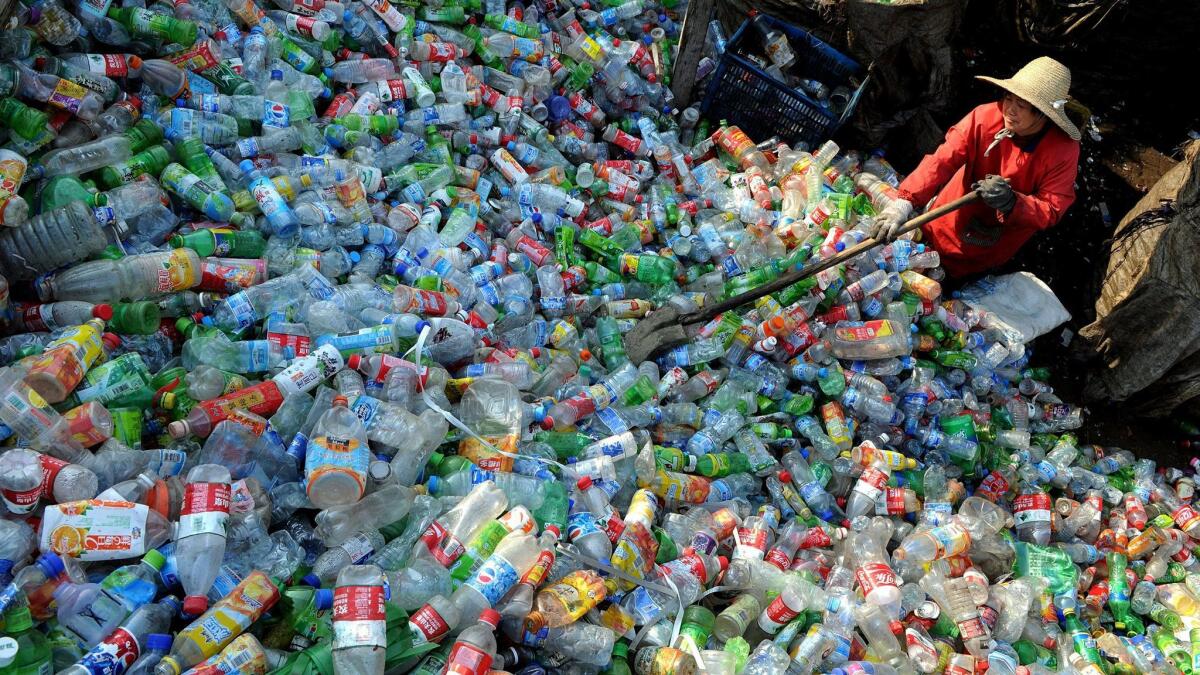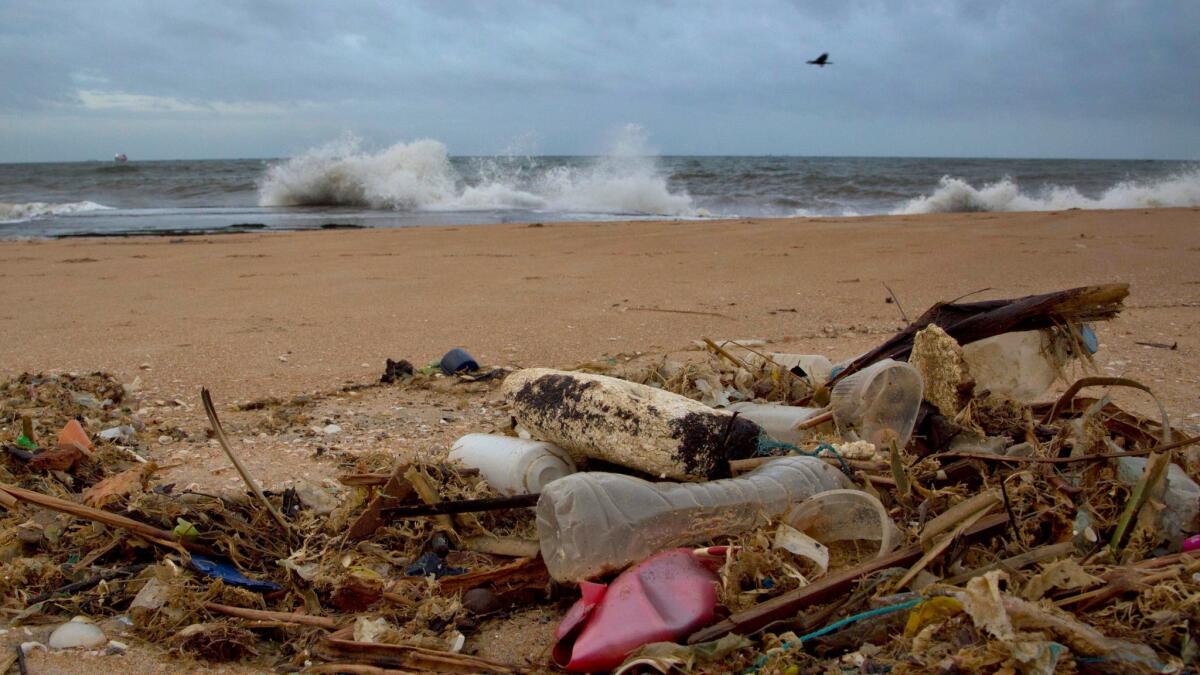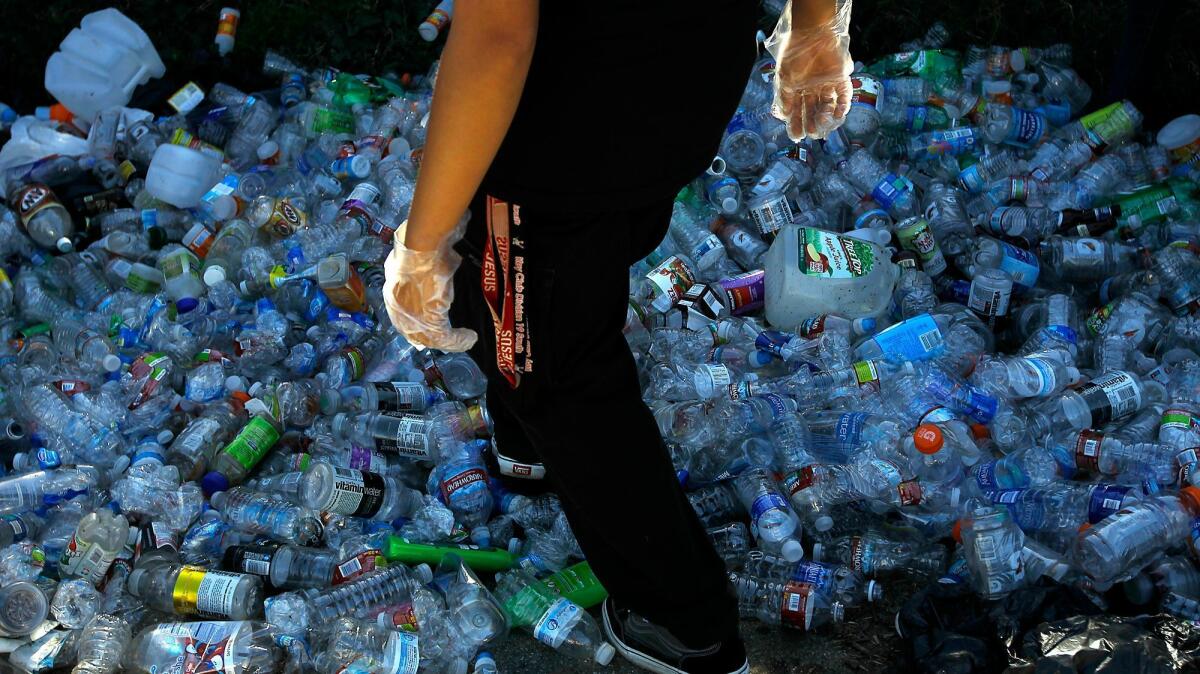Plastic trash could top 13 billion tons by 2050. And recycling doesn’t help much

Animation summarizing the production and fate of all plastics ever made.
Humans make more plastic than just about anything.
Since the 1950s, plastic production worldwide has exploded from about 2 million tons to a whopping 440 million tons in 2015, surpassing any other man-made material except for cement and steel.
A total of 9.1 billion tons of plastic have ever been produced, with half coming in the last 13 years, according to a new analysis in Science Advances.
And that makes sense: Plastic is ridiculously useful and durable. The problem is the stuff is a little too durable.
The plastic produced 60 years ago is still around today and likely will be with us for centuries or longer. If it’s not incinerated, it piles up in landfills or the environment, most notably in the oceans. As of 2015, the plastic boom has been accompanied by nearly 7 billion tons of waste, according to the analysis.
The study, led by Roland Geyer, an industrial ecologist at UC Santa Barbara, tallies the sheer amount of plastic humans have produced, how it’s used and ultimately where it ends up.
And the numbers are dizzying.
9.1 billion
Tons of plastic ever produced
6.9 billion
Tons of plastic waste produced
5.4 billion
Tons of plastic discarded in either a landfill or the environment
661 million
Tons of plastic recycled
About 42% of all plastics ever produced have been used in packaging. The next largest use for plastics is in construction, which accounts for 19% of the share.
“Roughly half of all the steel we make goes into construction, so it will have decades of use; plastic is the opposite,” Geyer said in a statement. “Half of all plastics become waste after four or fewer years of use.”
The researchers excluded bio-degradable or bio-based plastics from their study, which has a global production capacity of only about 4.4 million tons.
Instead, the paper focuses on the most common types of plastic — including polyethylene and polypropylene used in packaging, polystyrene used in bags and foam, and acrylic fibers.
Of all the plastic ever produced, about 30% of it is still in use.
That leaves about 6.9 billion tons of plastic waste.
Of that, we’ve recycled 9% and incinerated 12%. The remaining 79% was left to pile up in landfills or the environment.
Recycling, the researchers say, doesn’t prevent plastic waste — it merely delays its entry into the landfill or the environment.
“The only way to permanently eliminate plastic waste” is to burn or melt it down, the authors write. “Thus, near-permanent contamination of the natural environment with plastic waste is a growing concern.”

In the ocean, plastic debris floats on the surface, where sunlight breaks it down into tiny millimeter- and micrometer-sized particles called microplastics. These can be mistaken for food by birds and possibly contaminate the marine food chain.
Every major ocean basin now has its own so-called “garbage patch,” a collection of plastic pollution caught up in the swirling currents. In a previous study, the same researchers estimated about 4 million to 13 million tons of plastic waste entered the marine environment in 2010.
This is how hundreds of tons of plastic trash end up in Arctic Ocean »
Researchers are also increasingly reporting contamination from microplastics and acrylic fibers on land and in freshwater ecosystems, according to the study.
“Plastic waste is now so ubiquitous in the environment that it has been suggested as a geological indicator of the proposed Anthropocene era,” the study authors write.
Plastic waste is now so ubiquitous in the environment that it has been suggested as a geological indicator of the proposed Anthropocene era.
— Roland Geyer and colleagues, in Science Advances

If production continues at its current rate, the world faces a glut of plastic waste by 2050.
28.7 billion
Tons of plastic resins produced by 2050
6.6 billion
Tons of acrylic fibers produced by 2050
9.9 billion
Tons of plastic recycled by 2050
13.2 billion
Tons of plastic incinerated by 2050
13.2 billion
Tons of plastic discarded in landfills or the environment by 2050
The study authors insist they are not anti-plastic, but they say these numbers can help policymakers manage how the material is managed at the end of its useful life.
“There are areas where plastics are indispensable, such as the medical industry,” Kara Lavender Law, a co-author of the study and research professor at the Sea Education Assn. in Woods Hole, Mass., said in a statement. “But I do think we need to take a careful look at our use of plastics and ask if it makes sense.”
Put another way:
“We cannot continue with business as usual unless we want a planet that is literally covered in plastic,” Geyer said.

Twitter: @seangreene89




